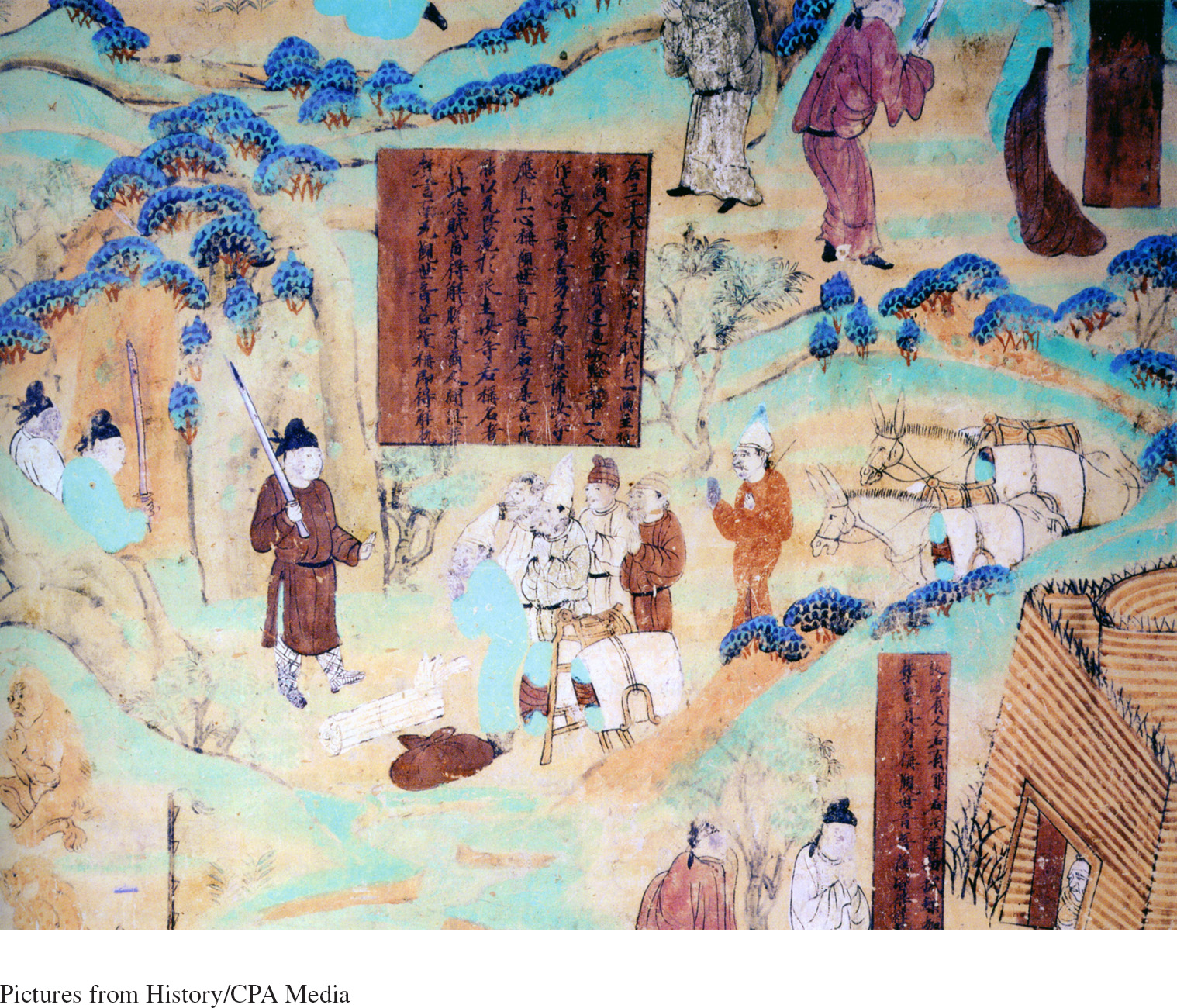Source 7.1 shows a typical confrontation along the Silk Road. An eighth-century painting, it was discovered in the Magao Caves near Dunhuang, a major stop on the Silk Roads and a center of Buddhist art and learning. It depicts a group of Tibetan and Central Asian merchants (on the right) who have encountered bandits or avaricious border guards (on the left). Required to unload their goods, the merchants await their fate — an extortionate payment, robbery of their goods, or maybe death. But in the Buddhist culture that pervaded much of the Silk Road network, legend had it that a wealthy merchant had gained safety during his travels by invoking the assistance of the bodhisattva Guanyin. (See Source 4.3 in the main text for a Japanese image of this Bodhisattva of Compassion.) The panel above the merchants reads in part: “If you all call upon his name, then from the malicious bandits you shall contrive to be delivered. . . . Men, by the mere calling upon his name, they shall forthwith gain deliverance.”1
